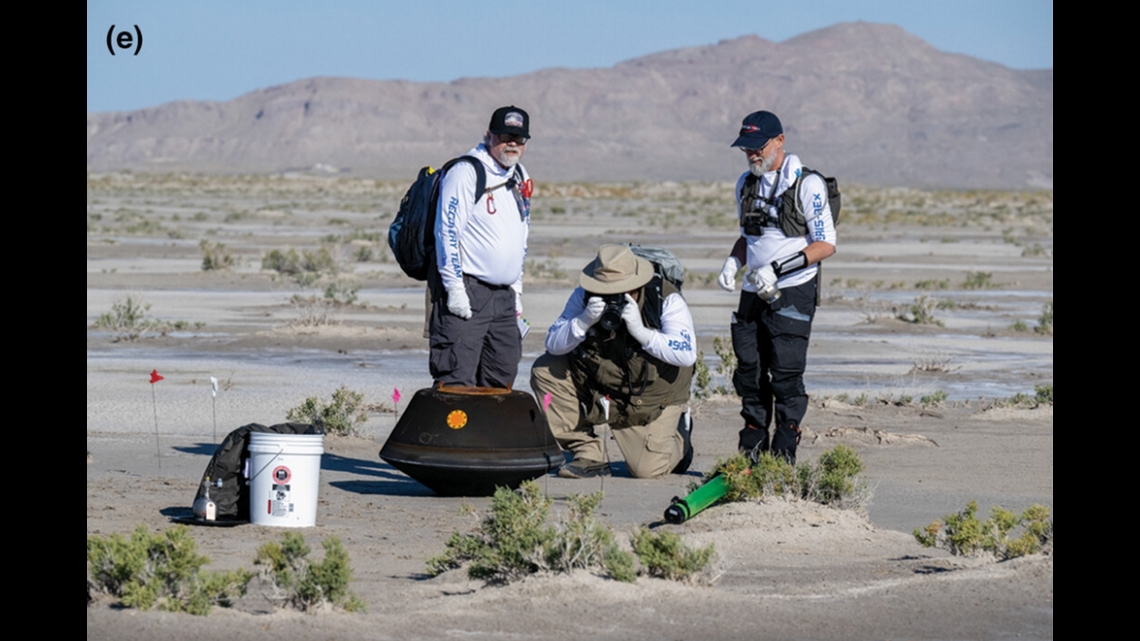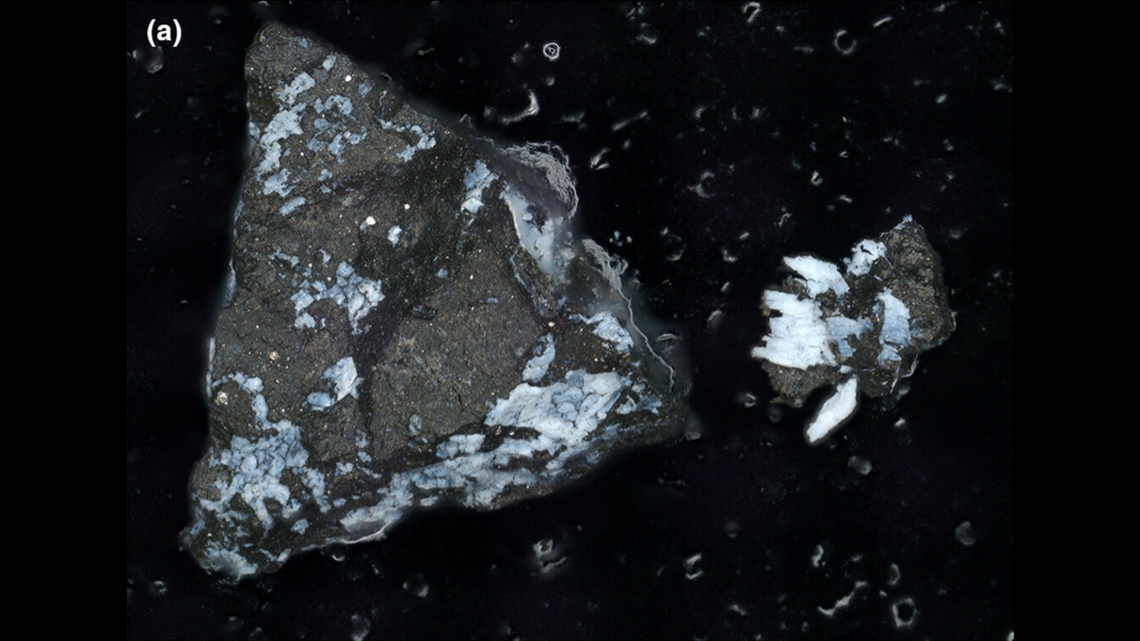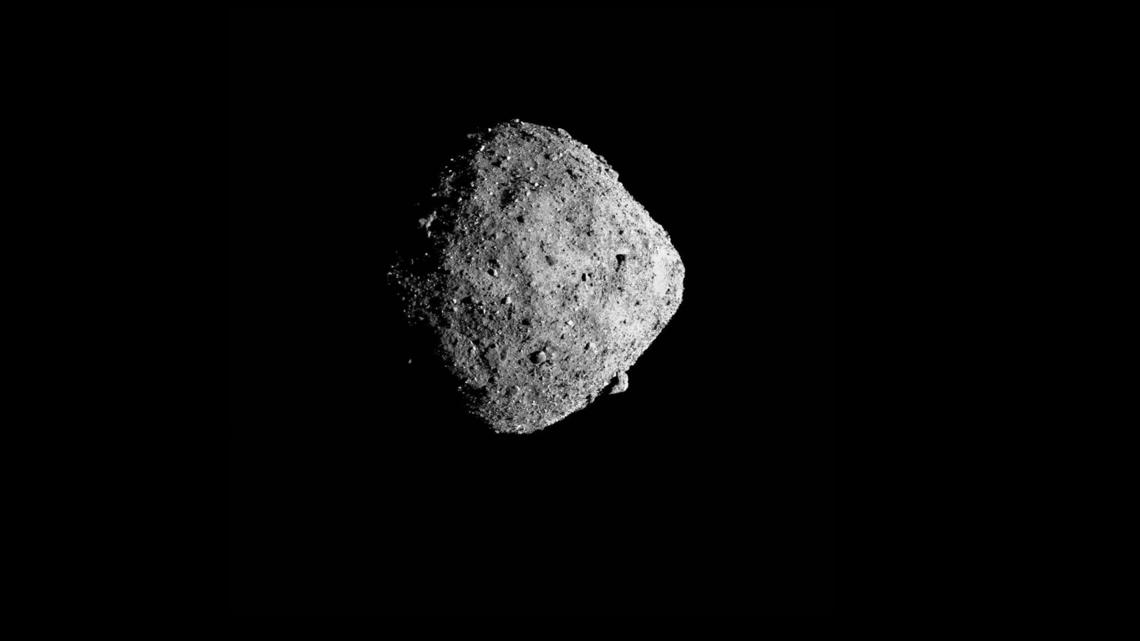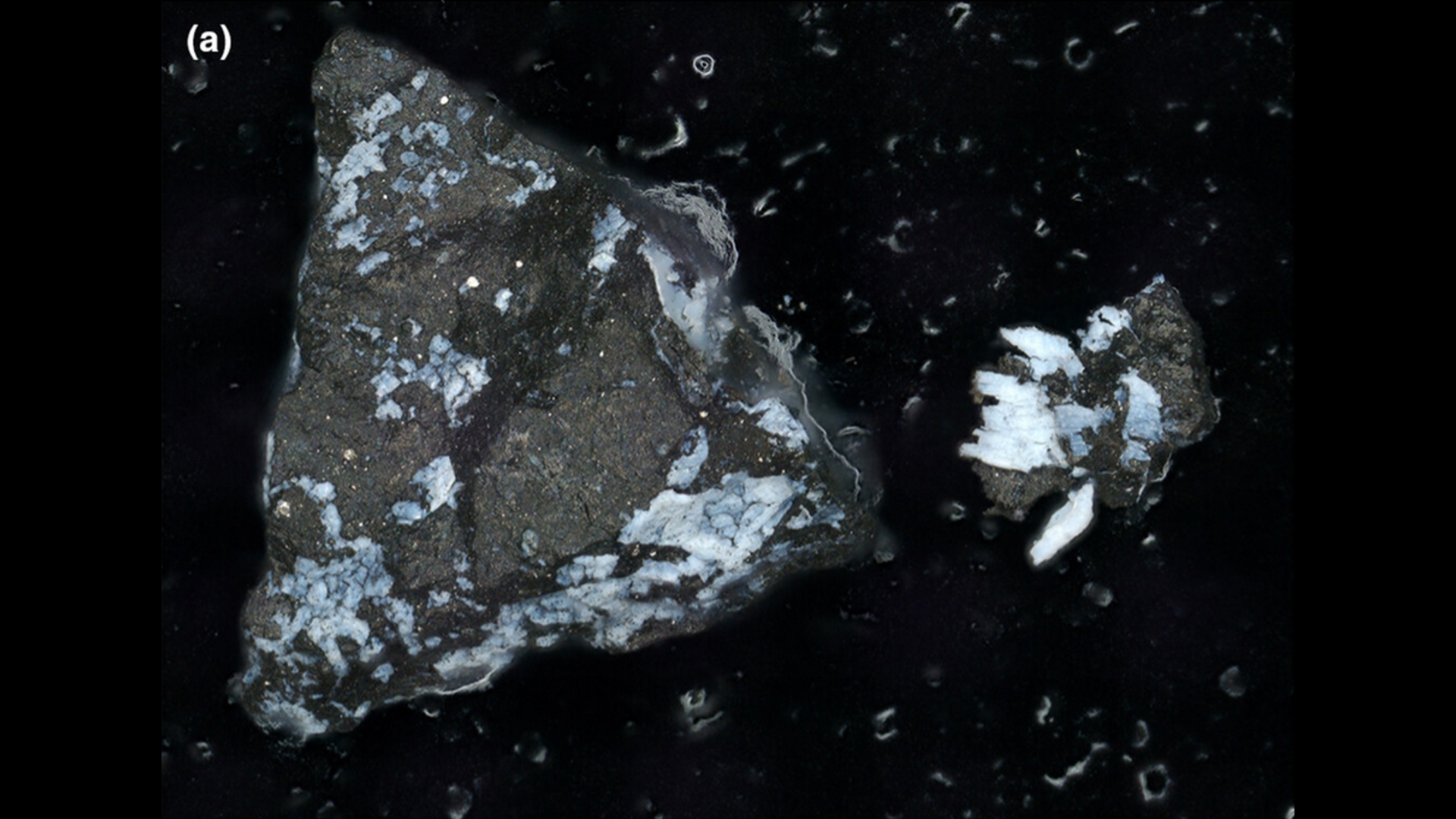TUCSON, Ariz. — Dante Lauretta waited two decades to study material from an asteroid. It’s just that he wasn’t allowed to hold it. That would have contaminated the sample NASA spent more than $1 billion to fetch and bring back to Earth.
But the University of Arizona planetary sciences professor could smell the tiny bits of rock — or at least the scent they left on the sterile tweezers and scoops he used to handle them.
“It’s not a pleasant smell,” Lauretta said. “Like a rotten egg, sewer gas kind of smell.”
The rocks came from Bennu, a round asteroid as tall as the Empire State Building. An asteroid with a small chance of impacting Earth in some 160 years. The capsule containing the precious payload touched down in the Utah desert 80 miles west of Salt Lake City in September 2023.
The mission may have ended, but the research will last for decades. Lauretta co-authored the first overview paper June 26 detailing what his team found looking at Bennu’s rocks, suggesting the asteroid may have been part of a larger, wet world.
Scientists consider the pebbles and dust to be treasures from the dawn of the solar system, and NASA hopes the sample “will offer clues to whether asteroids colliding with Earth billions of years ago brought water and other key ingredients for life.”
‘To Bennu and back’
OSIRIS-Rex is first U.S. mission to collect a sample from an asteroid.
That name stands for Origins, Spectral Interpretation, Resource Identification, Security, Regolith Explorer.
NASA selected Lauretta as the mission’s principal investigator — the person in charge of scientific integrity and ensuring the mission stayed on budget and schedule.
The spacecraft, the size of a car, launched in September 2016 and took two years to reach Bennu, then spent the next two years circling the asteroid to map its surface and find the safest place to collect a sample — roughly 122 grams worth, or about as heavy as a banana.
“This is material that existed in orbit around the sun before our planet did and it is the kind of material that went on to build the planets,” Lauretta said.
That precious bounty was stored safely inside a small capsule on its 1.2 billion mile journey back to Earth and through the atmosphere at 27,000 miles-per-hour on Sept. 24, 2023.
Lauretta was in a helicopter near the projected landing site waiting to hear if the parachute had opened.
There seemed to be a problem.
“My mind flashed back to this mission in 2004 where a capsule crashed into the Utah desert because the parachute failed,” Lauretta said.
The capsule’s drogue parachute, which helps stabilize its descent, was supposed to open three minutes earlier. Fortunately, a backup system worked, and the capsule with touched down safely.
“It was like seeing an old friend,” Lauretta said.


As much as scientists like Lauretta wanted to peek inside, they had to wait.
“We try not to expose [the sample] to air,” Lauretta said. “It turns out, it’s pretty reactive in the atmosphere.”
Under the microscope
Once the asteroid samples were flown to NASA’s Johnson Space Center in Houston, Texas, the capsule was opened inside the Astromaterials Acquisition and Curation Office — the same facility that stores Moon rocks.
Inside a custom-built clean room and nitrogen filled glove box, Lauretta was not prepared for how dark the extraterrestrial rocks would be.
“You see the real material and it looks like a hole,” Lauretta said. “There is no light in there. I have never seen anything that dark before and it takes your brain a little bit of time to process exactly what you are seeing.”
The sample from Bennu had carbon, water and organic materials which NASA said, “could indicate the building blocks of life on Earth may be found in rock.”
Lauretta also discovered Bennu’s rocks were dominated by clay minerals, particularly serpentine — the type of magnesium-rich rock found at hydrothermal vents on Earth’s ocean floor.
The rocks also contained phosphorous.
“Phosphorous is the limiting element for life. It’s critical, it makes up DNA and RNA, it makes up cell membranes, it makes up the bones in our teeth,” Lauretta said. “It’s a really important element for life and to see it concentrated like this in these samples is amazing.”


What Lauretta did not find was any evidence of life, although he said there is a possibility life could have existed on the larger, water world Bennu was likely once part of.
“Anything surviving on Bennu today is really unlikely, but its precursor, maybe,” Lauretta said. “I want to make clear though, we don’t see any evidence of that in the sample. There are no fossils or anything that looks like life that may have existed in the past.”
‘Potentially hazardous asteroid’
Collecting rocks and dust was not the only mission objective for OSIRIS-Rex; NASA wanted to learn more about the asteroid, which has a slight chance of impacting earth in the future.
“We are dealing with what is known as the most potentially hazardous asteroid to the earth,” Lauretta said. “There is a security aspect to our investigation; it’s not going to happen any time soon, I don’t want people to panic. If there will be an impact — and it’s a very small probability — it will be about 160 years in the future.”
NASA said Bennu has no chance of hitting Earth through the mid 2100s. After that, the odds of impact are 1 in 1,750 through at least the year 2300.


Precision tracking data from the OSIRIS-Rex mission is “significantly reducing uncertainties related to [Bennu’s] future orbit and improving scientists’ ability to determine the total impact probability and predict orbits of other asteroids,” according to NASA.
Scientists were surprised to discover how loosely packed the asteroid was. Bennu’s surface is like a plastic ball pit.
Plenty more to discover
NASA plans to loan the rock and dust samples to hundreds of qualified scientists around the world for their own research and experiments.
Other debris will be preserved for the next generation of scientists and technology, NASA said.
A pebble from Bennu is already on public display at UArizona’s Alfie Norville Gem and Mineral Museum in Tucson.
Lauretta said dozens of UArizona students went on to become professionals on the OSIRIS-Rex project, which has been renamed to OSIRIS-APEX or the OSIRIS-Apophis Explorer. Once the spacecraft released the capsule toward Earth, it changed trajectory to explore asteroid Apophis, which it will reach in 2029, according to NASA.
“It’s a career worth of work and I am very proud of everything we have produced,” Lauretta said.
His contributions to science will endure long after he is gone, as will 5819 Lauretta, the asteroid that bears his name.
Get to know 12News
At 12News, we listen, we seek, we solve for all Arizonans. 12News is the Phoenix NBC affiliate owned by TEGNA Inc.
12News is built on a legacy of trust. We serve more than 4.6 million people every month on air, on our 12News app, Facebook, Instagram, YouTube, Twitter, and 12News.com.
We are committed to serving all of the Valley's communities, because we live here, too.
12News is the Official Home of the Arizona Cardinals and the proud recipient of the 2018 Rocky Mountain Emmy Award for Overall Excellence.
Stay connected by downloading the 12News app, available on Google Play and the Apple Store. Catch up on any stories you missed on the show on the 12News Youtube channel. Read content curated for our Spanish-speaking audience on the Español page. Or see us on the 12News Plus app available on Roku or Amazon Fire.
12News Digital Exclusives
Go beyond the TV broadcast and learn more about unique Arizona stories on the 12News YouTube channel. Subscribe for more digital-exclusive content!

